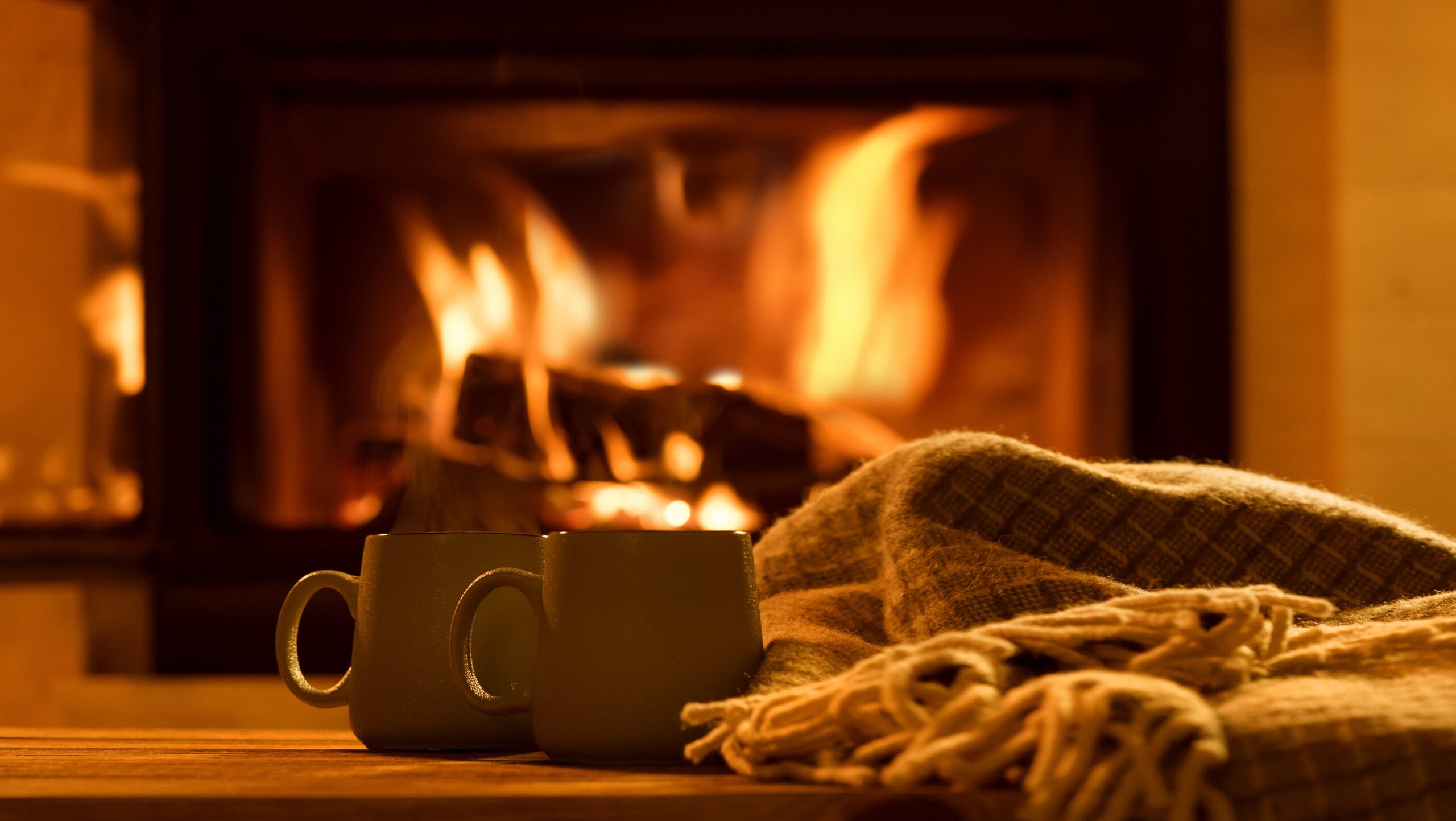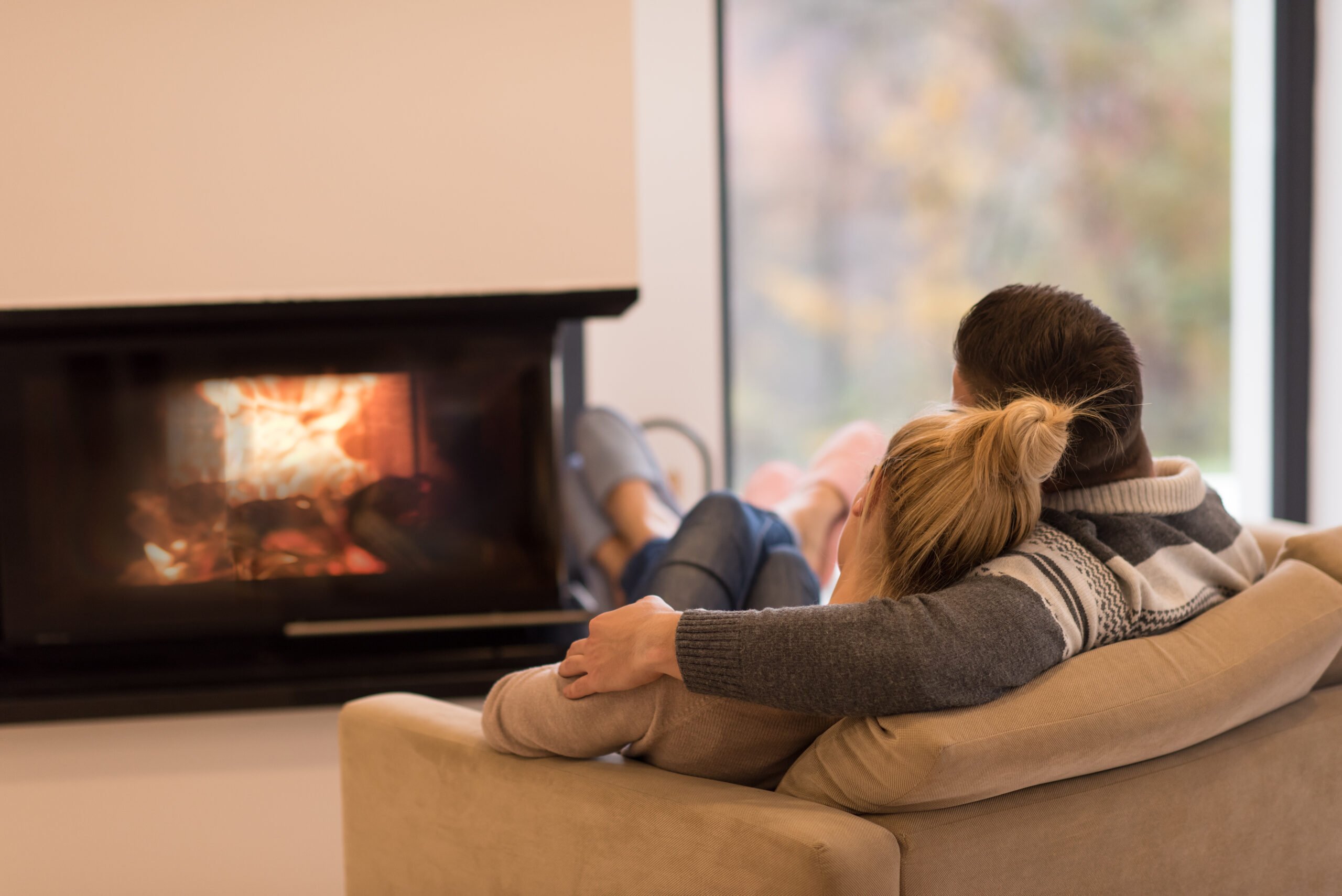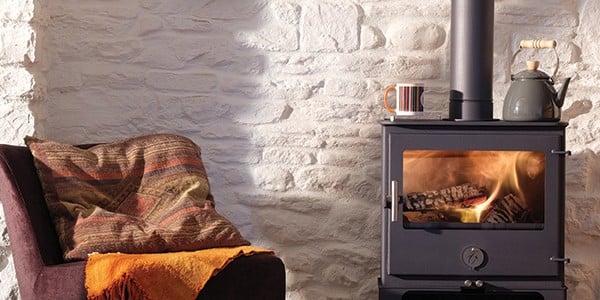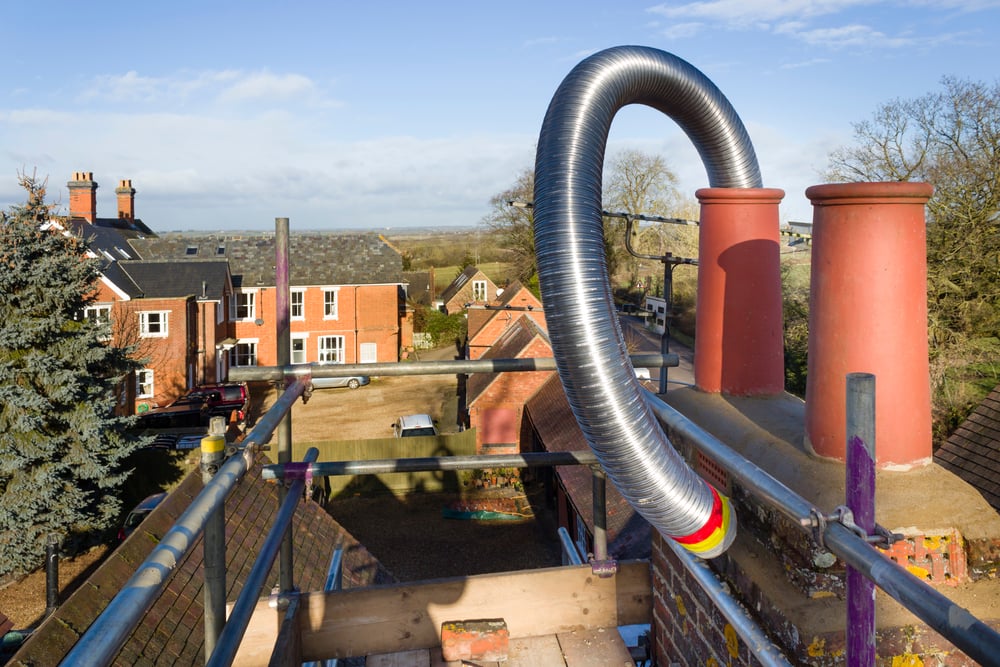What does a chimney sweep do?
When you book a chimney sweep, the work they undertake will entirely depend on the condition of your chimney. This article will explain what a chimney sweep does and how you can prepare for your visit; there is a lot of work that goes into a sweep, much of which is not noticed by the average consumer!
Differences between chimney sweep inspections
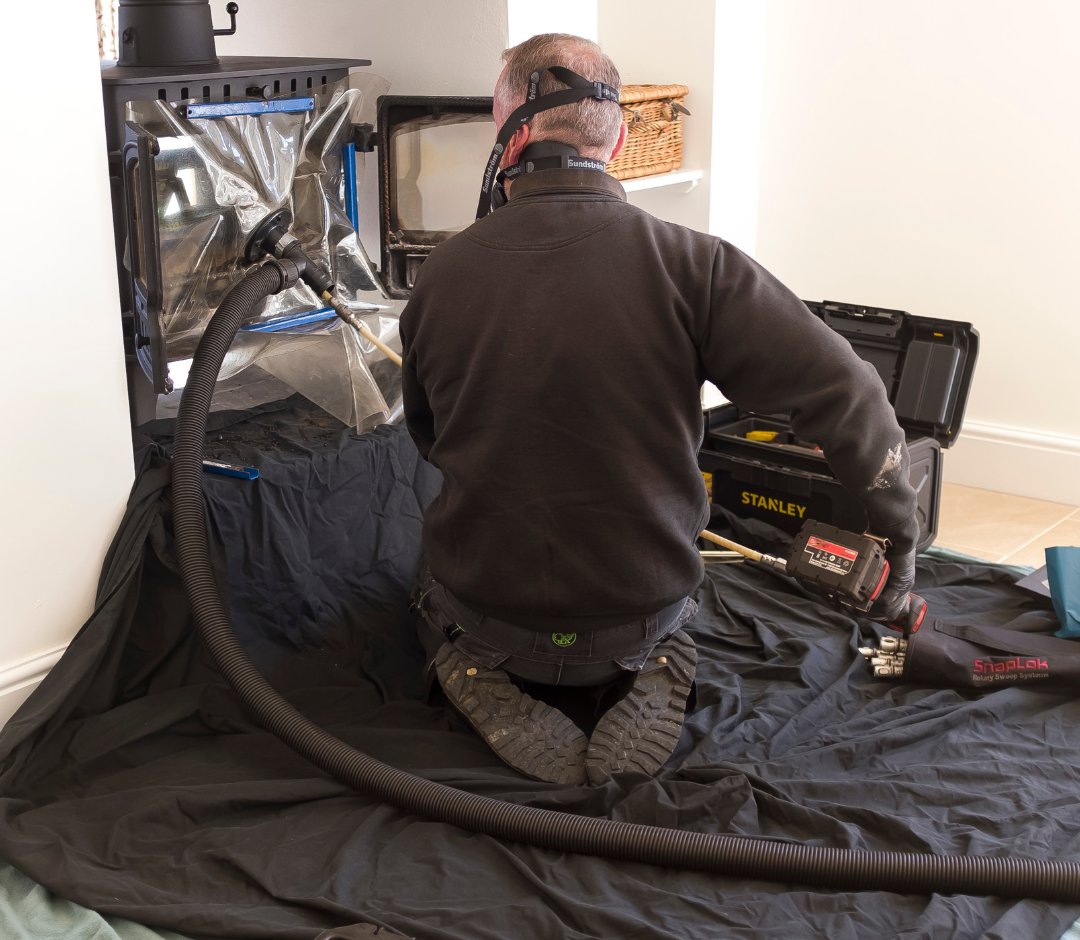
The average sweep takes approximately 60-90 minutes per chimney, but this can vary on the size, number, and composition of blockages in your chimney. When your chimney sweep visit, they will carry out an initial assessment to determine the level sweep your chimney requires. As a standard, there are 3 levels of sweep that can be undertaken:
Level 1 Chimney Sweep Inspection
This is the most common and fundamental inspection. A visual check to look for any obstructions in your chimney such as creosote build-up, a bird nest, or soot will allow your sweep to determine how to approach the job. Some sweeps also come equipped with digital cameras, allowing them to more thoroughly investigate your chimney and identify blockages.
After the inspection, the sweep will commence. Your sweep will use brushes, extension poles, and a specialised vacuum to remove any material build-up in your chimney and safely contain it.
Level 2 Chimney Sweep Inspection
A level 2 chimney sweep inspection is required if a major change has occurred such as installing a new appliance, using a new fuel, or if your chimney has had structural changes. If you have just purchased the property or do not have accurate documentation of your fireplace’s history, a level 2 chimney sweep inspection is often advised.
During this inspection, your sweep will conduct the following:
-
Smoke leakage test – this test will determine if there are any leaks in the chimney or flue system.
-
Smoke pressure test – this test examines the integrity of the brick flue to discover if there are any structural issues with the chimney.
This inspection also includes all the procedures involved in a level 1 inspection.
Following a level 2 inspection, your sweep may issue you a report indicating any recommended or required maintenance/repairs that your chimney needs.
Level 3 Chimney Sweep Inspection
This is the rarest type of chimney inspection and is usually only required following a chimney fire or in old properties where the chimney is aged or extremely difficult to inspect.
During a level 3 chimney sweep inspection, your sweep will have to demolish portions, or the entirety, of your chimney to facilitate an inspection. This level of inspection would require much more equipment, preparation, and manpower than the previous two levels and would be arranged following a level 2 inspection where structural or inspection issues have been identified.
How do you prepare for a chimney sweep?
If you have an upcoming chimney sweep and are unsure what to do before your chimney is swept, follow these tips to enable a trouble-free inspection:
- Clear the hearth, mantelpiece, and the immediate area of any decorations or fireplace tools.
- Do not light a fire at least 24 hours prior.
- Remove any un-burnt fuel.
- Clean any residual debris away from your appliance.
Most chimney sweeps come equipped with protective dust sheets so there is no need to worry about your carpets! It is good practice, however, to clear a path for your sweep’s equipment to avoid any damages or injuries.
If you have been experiencing any issues with your appliance or have any queries, make sure you communicate these with your sweep.
Traditional sweeping vs. power sweeping
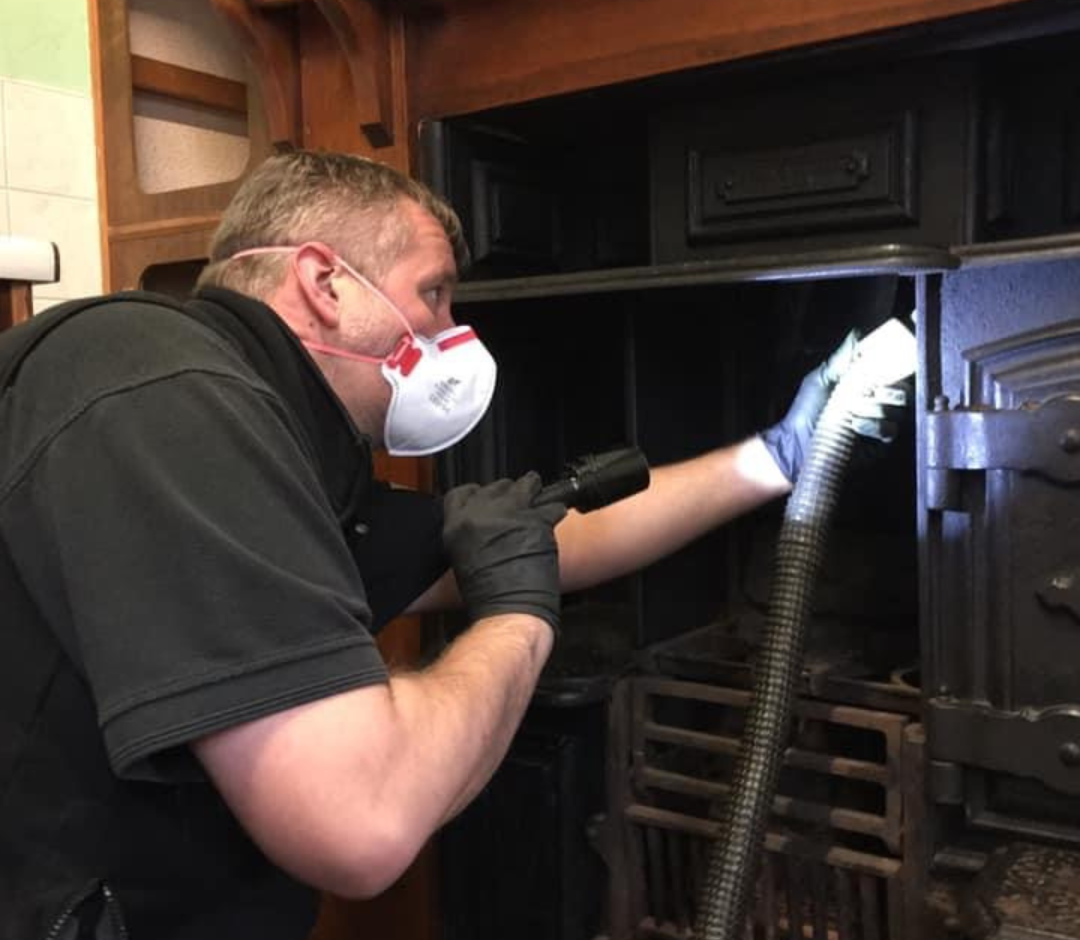
The difference between a traditional chimney sweep and power sweeping comes down to two primary factors: the material buildup and the integrity of the chimney/flue liner.
Traditional
A traditional sweep is what the average person thinks of when they think of a chimney being swept; it is a manual method that is suitable for most chimneys. Round polypropylene or metal wire bristles are attached to the end of a rod and this rod is then inserted into the chimney and manually brushed against the flue to detach any materials that are stuck. As these materials are brushed off the flue and cleared from the chimney, they fall down and are safely vacuumed away to avoid a mess and any respiratory harm.
Power sweeping
Power sweeping utilises whips to facilitate a more rigorous and extensive clean. These whips are spun at high speeds using a drill and the centrifugal force dislodges any stubborn deposits in the flue. The power sweep is undertaken in opposite directions when ascending and descending the chimney, enabling a sweep that clears as much buildup as possible.
Care must be taken when power sweeping as the intensity of the sweep can cause damage to some chimney liners. Consult your HETAS Approved Chimney Sweep – they will be able to speak to you about the viability of a power sweep in your chimney.
Your HETAS Approved Chimney Sweep will inspect your chimney and determine which method is safe and suitable. They should have all the necessary equipment to undertake whatever method is necessary to keep your chimney functioning efficiently and safely.
Do I need my chimney swept before it is closed off?
If you are having your chimney closed off, it will require a sweep prior to being closed. When a chimney is closed off, it can become damp – this affects any potential soot that remains in your chimney. Soot is acidic – if it absorbs any moisture in your closed chimney, it becomes a substance that can leave black marks through your walls and chimney and, in exceptional circumstances, cause structural integrity issues or cause chimney fires.
The job of a chimney sweep encompasses a lot – a HETAS Approved Chimney Sweep will have the expertise to determine the level of sweep required and the most appropriate method to tackle buildup in your chimney.
Make sure you Book a Sweep to keep your chimney safe and your appliance efficiently running.
